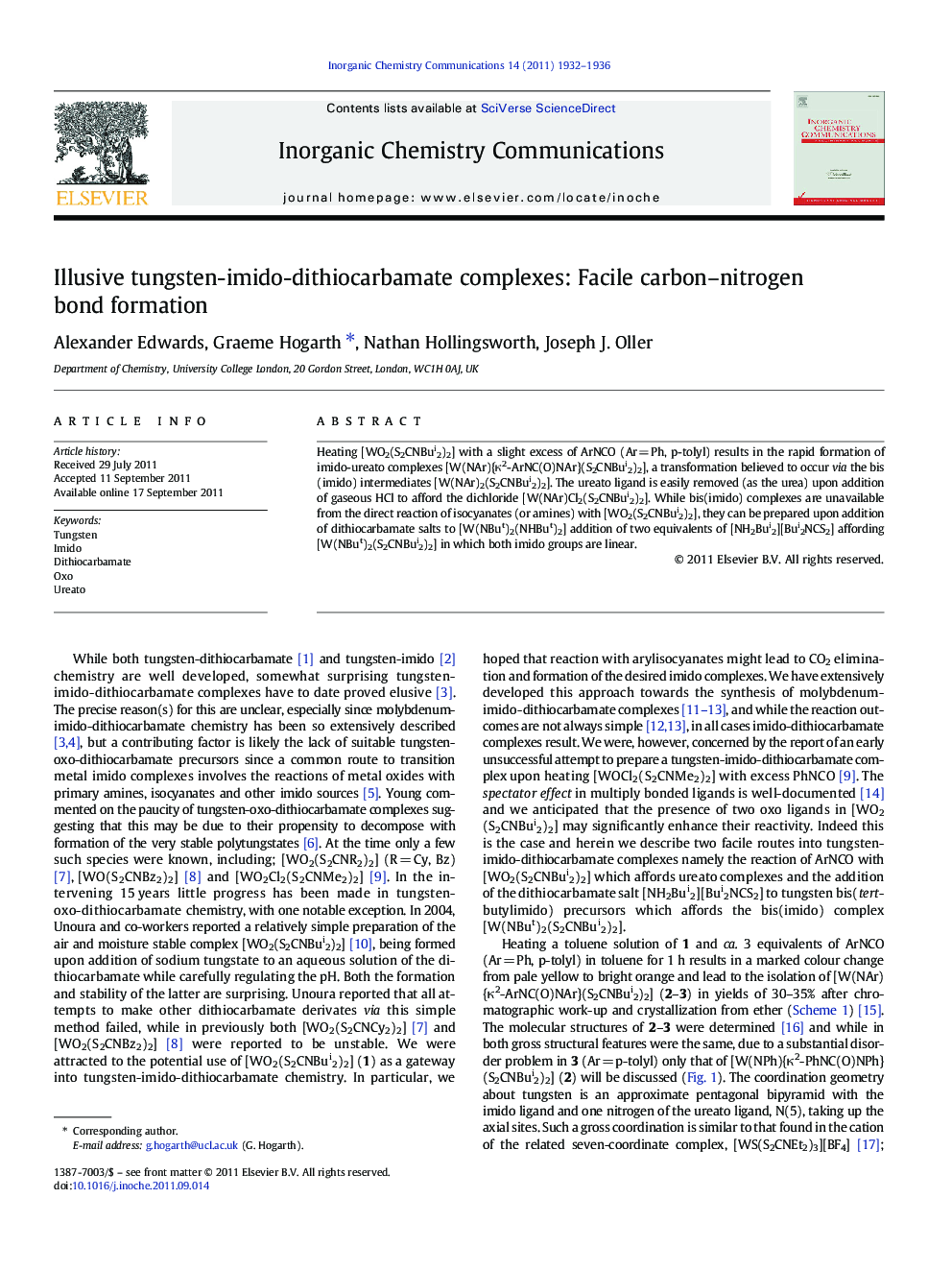| Article ID | Journal | Published Year | Pages | File Type |
|---|---|---|---|---|
| 1302469 | Inorganic Chemistry Communications | 2011 | 5 Pages |
Heating [WO2(S2CNBui2)2] with a slight excess of ArNCO (Ar = Ph, p-tolyl) results in the rapid formation of imido-ureato complexes [W(NAr){κ2-ArNC(O)NAr}(S2CNBui2)2], a transformation believed to occur via the bis(imido) intermediates [W(NAr)2(S2CNBui2)2]. The ureato ligand is easily removed (as the urea) upon addition of gaseous HCl to afford the dichloride [W(NAr)Cl2(S2CNBui2)2]. While bis(imido) complexes are unavailable from the direct reaction of isocyanates (or amines) with [WO2(S2CNBui2)2], they can be prepared upon addition of dithiocarbamate salts to [W(NBut)2(NHBut)2] addition of two equivalents of [NH2Bui2][Bui2NCS2] affording [W(NBut)2(S2CNBui2)2] in which both imido groups are linear.
Graphical abstractHeating [WO2(S2CNBui2)2] with three equivalents of ArNCO (Ar = Ph, p-tolyl) results in the rapid formation of imido-ureato complexes [W(NAr){κ2-ArNC(O)NAr}(S2CNBui2)2], a transformation believed to occur via the bis(imido) intermediates [W(NAr)2(S2CNBui2)2], an example of which, [W(NBut)2(S2CNBui2)2], is prepared upon addition of dithiocarbamate salt to [W(NBut)2(NHBut)2].Figure optionsDownload full-size imageDownload as PowerPoint slideHighlights► Tungsten-imido-dithiocarbamate complexes are reported for the first time. ► Two different routes have been developed from tungsten oxo and tungsten imido precursors. ► The imido ligands appear to be quite reactive and undergo cycloaddition with organic isocyanates.
